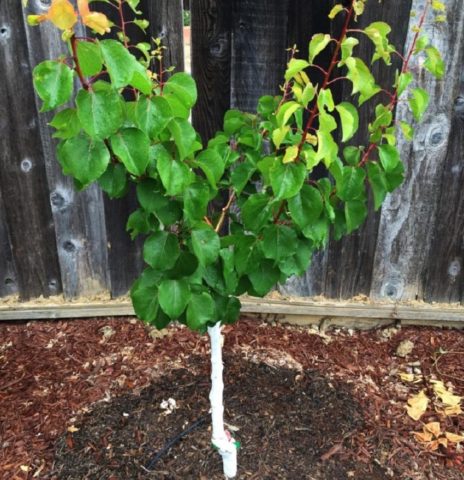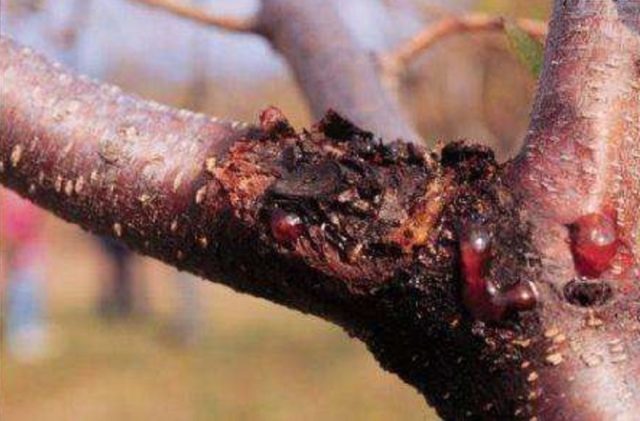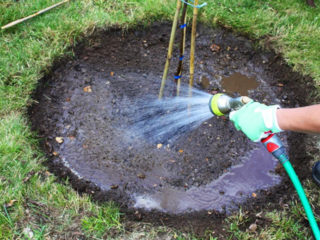Content
Description of the apricot variety Pineapple Tsyurupinsky - effective help for gardeners who have decided to plant it on their plot. The Latin name of the tree is Pineapple Tsyurupinskiy. The variety has a lot of positive characteristics, does not require complex care, and has good productivity. To get a decent harvest, you just need to adhere to agrotechnical recommendations.

The variety is very attractive in appearance and taste characteristics
History of selection
The cultivar was bred by breeder K. F. Kostina in the State Nikitsky Botanical Garden. It is located in the Tsyurupinsky district of the Kherson region. Hence the name of the apricot variety. The species was obtained as a result of selecting seedlings of the Pineapple variety. Registered in the State Register since 2014.The Pineapple Tsyurupinsky apricot is zoned in the North Caucasus region, Kherson, Crimea and other southern regions.
Description of the variety
Tree parameters:
- Height. The Tsyurupinsky Pineapple variety is classified as medium-sized. An adult apricot grows up to 4-5 m. The growth rate is average.
- Crown. Round, wide, lush. Density and shoot formation are average. Diameter 2-4 m.
- Leaves. Large, bright green, rough. The size is medium, the shape resembles a heart with an elongated top. There are serrations at the ends. The leaves are located on long dark red petioles.
- Flowers. White-pink, very delicate, sitting on short stalks.
- Fruit. Medium in size, one weighs about 50 g. Gardeners claim that under good growing conditions, apricots weigh 70-80 g. They are irregular in shape, with a pronounced bevel. The surface is lumpy. The color of apricots is matte light yellow, there is no blush. The pulp is the same color, medium density, juicy, with a good aroma. The taste of the fruit is sweet with an admixture of fruity notes. Some gardeners call it pineapple apricot. Tasting score 4.5 points. The stone is small, separates well, the kernel is sweet. The skin is slightly pubescent, velvety, without integumentary coloring.
In the photo there is an apricot Pineapple Tsyurupinsky:

To get a high yield of a variety, the tree should be provided with the conditions described by the originator
Characteristics
Gardeners note a whole list of worthy characteristics of the Pineapple Tsyurupinsky variety. Apricot has decent immunity to fungal infections, is distinguished by early fruiting and winter hardiness.Contains many components beneficial to the human body.
Drought resistance, winter hardiness
For the climate of the regions recommended for growing the variety, the winter hardiness of apricot is quite sufficient. The tree can withstand temperatures down to -25°C. If shoots freeze in winter, they quickly recover in spring. Drought resistance is high, which makes it possible to grow the Pineapple Tsyurupinsky apricot variety in regions with a dry, hot climate.
Pollination, flowering period and ripening time
The apricot variety is classified as self-fertile, therefore it produces a harvest even with single plantings. However, the close proximity of other stone fruits increases the yield and improves the taste of the fruit. According to the ripening period, the Pineapple Tsyurupinsky variety is considered a mid-season summer variety. Flowers bloom between April 16 and May 5. Apricots ripen in the second half of July.

The variety is characterized by late flowering, which saves it from return frosts
Productivity, fruiting
Pineapple Tsyurupinsky begins to bear fruit in 3-4 years. The yield indicator ranges from 90 kg to 150 kg per tree. It increases with the age of the apricot and with quality care. The variety requires competent and regular pruning. When the crown is thickened, fruiting is weakened due to a decrease in the formation of flower buds. Productivity is also affected by moisture-charging irrigation in spring and autumn.
Area of application of fruits
Apricot Tsyurupinsky Pineapple is considered a table variety. Therefore, the fruits have universal use. They are used fresh for making jams, preserves, juices, and compotes. Juices and compotes are prepared as winter preparations or consumed immediately.

Apricots are best consumed fresh to preserve nutrients.
Resistance to diseases and pests
The variety attracts attention for its resistance to clasteriosporiosis and moniliosis. These diseases often affect apricots, but they do not threaten Tsyurupinsky Pineapple. In addition, the tree is not susceptible to leaf curl.
Advantages and disadvantages
Thanks to the description of the variety and reviews from gardeners, lists of advantages and disadvantages have been compiled for the Pineapple Tsyurupinsky species. This is very useful information for those who want to plant apricots on their plot.

Only if the requirements of agricultural technology are met, the variety exhibits all its advantages.
Main advantages:
- good yield indicator;
- stable fruiting;
- dessert taste of fruits;
- frost resistance;
- high immunity to diseases;
- ability to quickly recover after freezing;
- drought resistance.
The disadvantages of the cultivar are:
- short period of productivity (25 years);
- shedding of overripe fruits;
- average keeping quality.
Landing Features
Planting is an important stage in the life of a tree. The further growth of the Pineapple Tsyurupinsky apricot depends on the quality of the procedure. In order for the plant to develop well, it is necessary to perform a number of actions:
- adhere to recommended planting dates;
- choose the right apricot seedling;
- prepare the place and soil;
- perform the landing correctly.
Planting the Tsyurupinsky Pineapple variety does not differ significantly from the procedure for other apricots. But the stages have their own nuances, which you need to familiarize yourself with in advance.
Recommended timing
The time should be chosen taking into account the growing region. The period is influenced by climatic features. For the southern regions, autumn planting is recommended.Gardeners in the middle zone can plant apricots with the same result in spring or autumn. Residents of the Urals and Siberia should stick to spring planting until the buds awaken.
Choosing a suitable location
The variety develops well and bears fruit in a lighted place, especially in the first half of the day. It is good if the tree is provided with protection from drafts. The distance from walls and other trees should be at least 3-5 m. Low-lying areas should be avoided. Pineapple Tsyurupinsky grows best on loam with a neutral or slightly acidic reaction. The depth of groundwater is at least 1.5 m.

A small tree needs protection from the wind
What crops can and cannot be planted next to apricots?
You should not place cherries, apples, cherries, pears, peach, rowan and nuts next to apricots.
These plants share common pests and diseases with apricots, and also consume the same nutrients from the soil. It is also not recommended to place currants and raspberries close together due to the similarity of pests.
Selection and preparation of planting material
To avoid mis-grading, seedlings must be purchased from reliable suppliers - garden nurseries or trusted gardeners. It is best to take one- or two-year-old plants 0.7 m high, with good roots 25 cm long and the beginnings of skeletal branches (3-4 pieces). It is recommended to find the vaccination site and inspect it. It must be well formed. The roots of the seedling are dark pink, the shoots are thin, the leaves are rough, the wood is light green. A long tap root is required.
Landing algorithm
2 weeks before planting it is necessary to prepare the planting hole. For a spring event, it is better to do this in advance in the fall. Main stages:
- The size of the apricot pit is 70x70 cm.
- Fill 1/3 of the volume with organic matter.
- Prepare a soil mixture from humus and fertile soil (1:1). Add 1 kg of wood ash, 300 g of bone meal.
- Fill the hole.
- Place the seedling in a stimulant solution (Kornevin, Zircon) for 6-12 hours.
- Trim damaged roots back to healthy, light-colored tissue.
- Set the stake for the apricot garter.
- Place a seedling nearby.
- Cover with soil, leaving the root collar 5-6 cm above the ground.
- Shake the roots periodically so that the soil fills all the voids.
- Lightly compact the apricot planting site and water.
- Shorten the branches by 1/3 of the length.
- Mulch the tree trunk circle.
If the Pineapple Tsyurupinsky seedling was purchased with a closed root system, then the planting algorithm does not change. The difference is the ability to plant apricots throughout the entire growing season.
Video about planting Pineapple apricot:

The seedling needs a stake for staking
Subsequent care of the crop
Apricot fruiting depends on the quality of care. The most necessary activities for Tsyurupinsky Pineapple are:
- Watering. It is of great importance, because the variety has average drought resistance. After planting, young seedlings need to be watered little by little every 2 days. Use 1 bucket of water per plant. After watering, lightly loosen the soil and mulch. This technique will preserve moisture and prevent weeds from developing. For mature apricots, you need to dig a groove around the perimeter of the crown, which is filled with water. For plants, lay a groove along the diameter, half the volume of the crown. Carry out the first watering in mid-spring, then the next in May. The third time the tree needs water is 2 weeks before the fruits begin to ripen.In spring and autumn, be sure to do moisture-charging irrigation.
- Feeding. Nutrients also need to be added to the groove. Use nitrogen for the variety in the spring, potassium in the summer, and phosphorus in the fall. Combine fertilizer with watering or apply it on damp soil. In the first year after planting, apply nitrogen twice – in mid-May and mid-June. For seedlings of the third and fourth years, reduce nitrogen to a minimum to promote fruiting.
- Trimming. The procedure should be carried out annually and carefully. If the tree has a thickened crown, the formation of flower buds will decrease and fruiting will decrease. Proper pruning regulates not only the yield, but also the sweetness and size of the fruit. The most effective crown form is considered to be sparsely layered. The time for spring pruning is April before the buds open.
Apricot responds very well to mulching the tree trunk area and treating the trunk with whitewash.
Diseases and pests
According to the description, the variety is resistant to moniliosis and clasterosporia. But there are diseases that Tsyurupinsky Pineapple is much less resistant to:
- Valsa mushroom;
The disease appears when pruning rules are violated
- gray rot;
To prevent infection, it is necessary to perform preventive spraying
bacterial spotb.The disease is provoked by non-compliance with crop rotation and lack of weeding.
To prevent their development, you need to carefully examine the apricot leaves and carry out preventive spraying with fungicides with alternating preparations. Trees can be treated with insecticides against pests.Be sure to collect and destroy mummified fruits, dig up the trunk circle in the fall, burn fallen leaves, and apply fertilizer.
Conclusion
The description of the Pineapple apricot variety is fully confirmed by the observations of gardeners growing it in their plots. If you provide the plant with good conditions, you can annually harvest a decent harvest of delicious, aromatic apricots.












Please tell me whether it is possible to grow PINEAPPLE apricot in the Orenburg region. Or it's not worth wasting your time. Thank you.